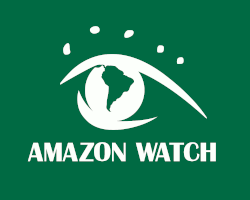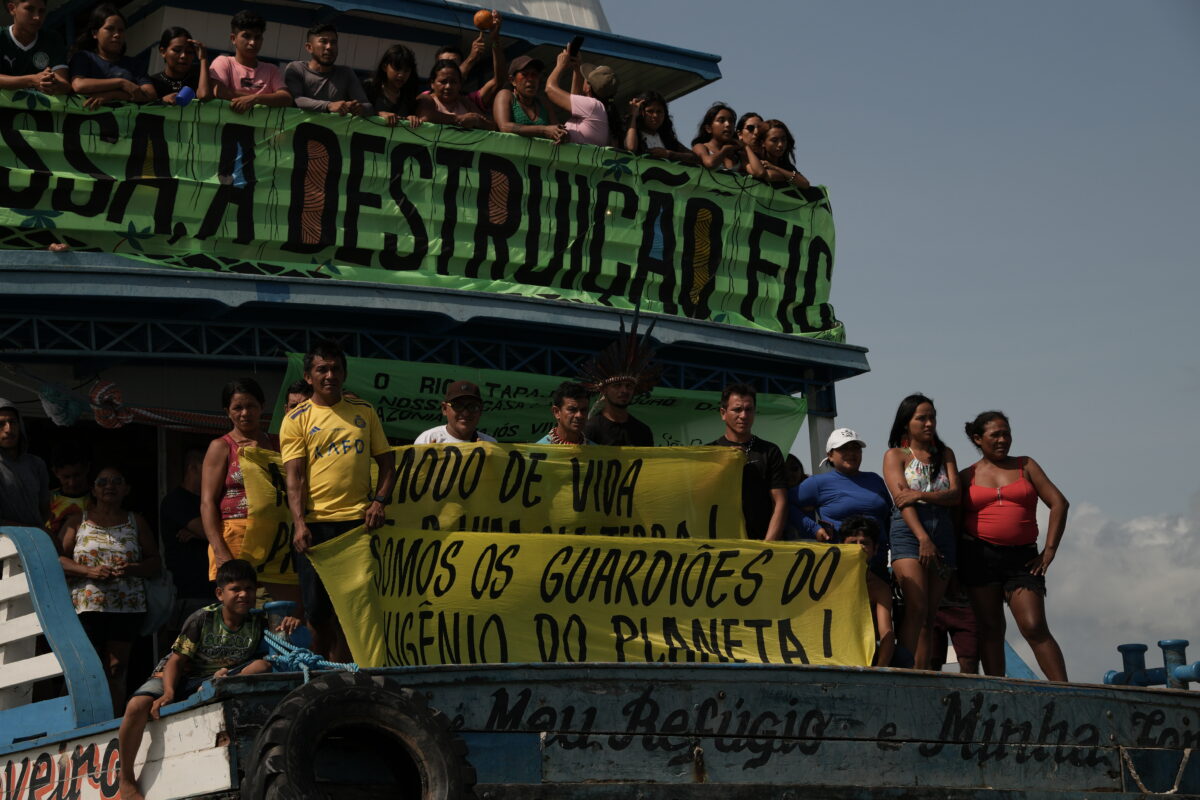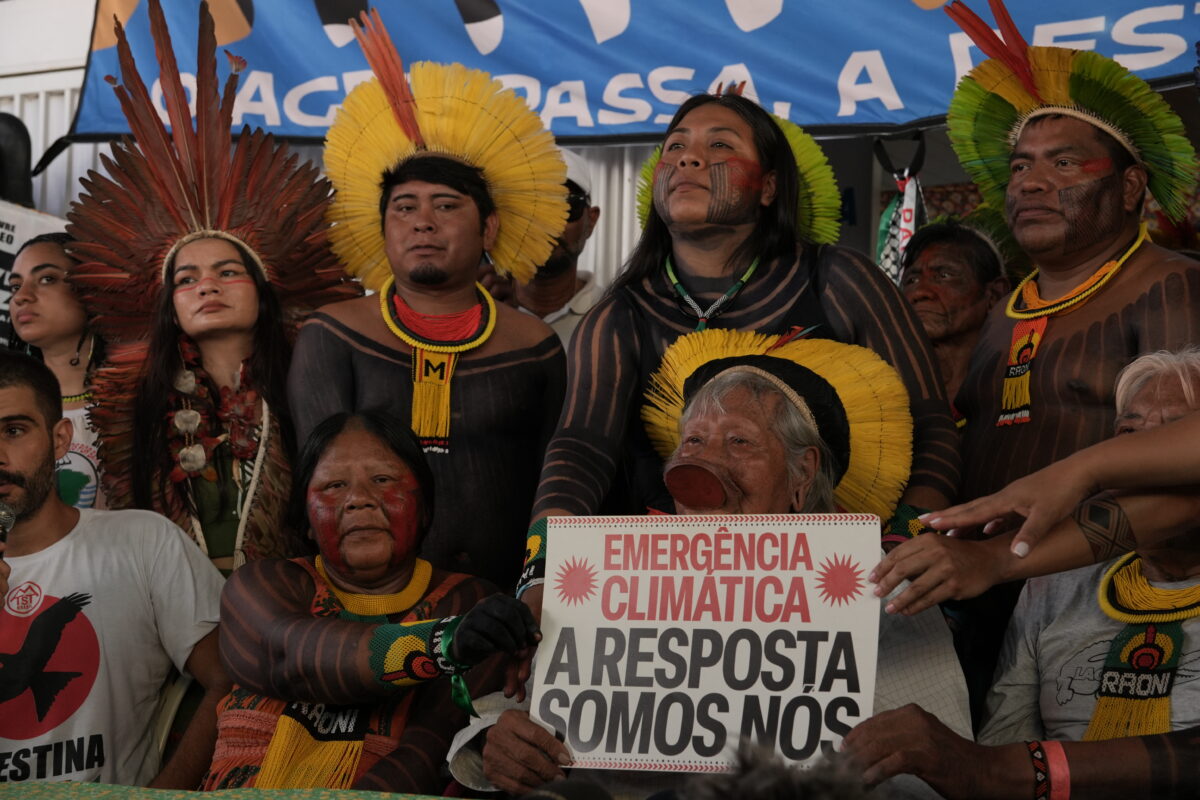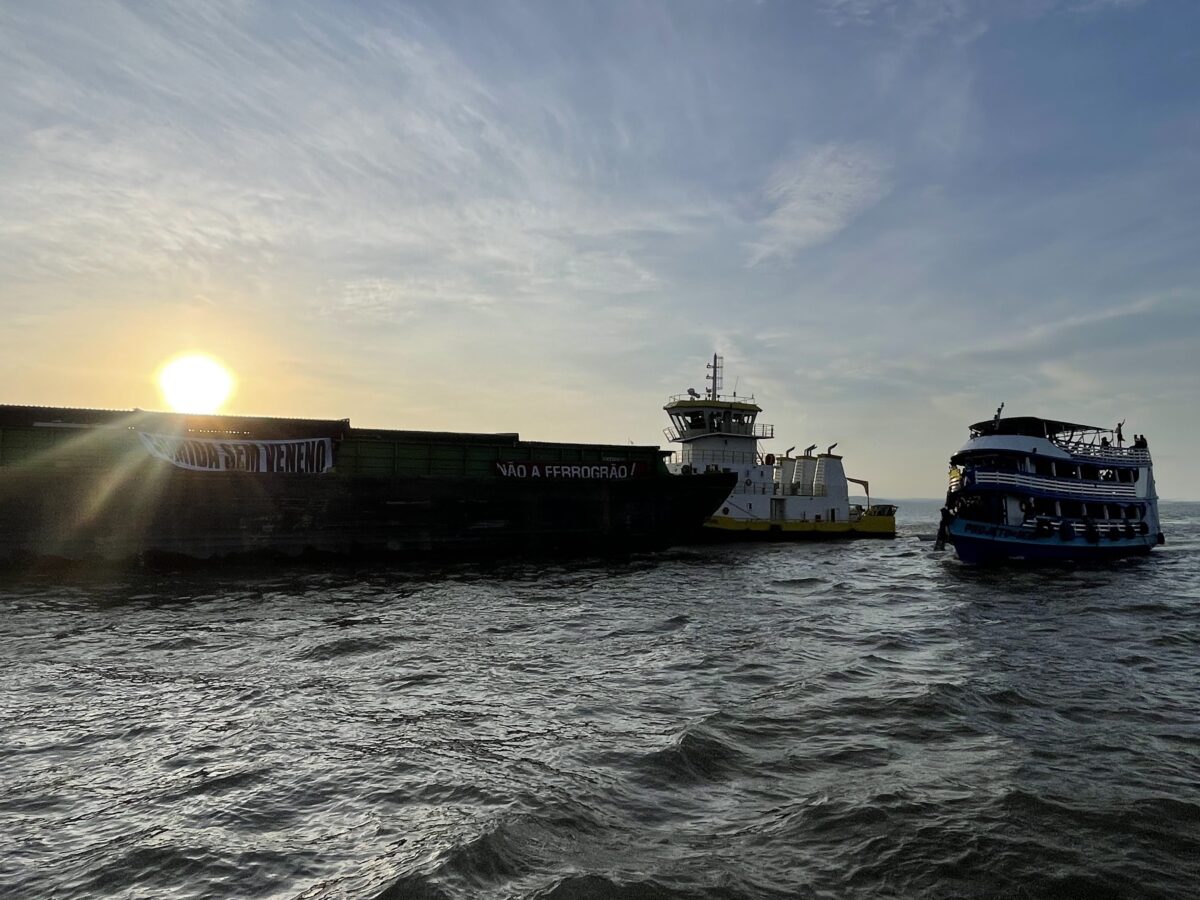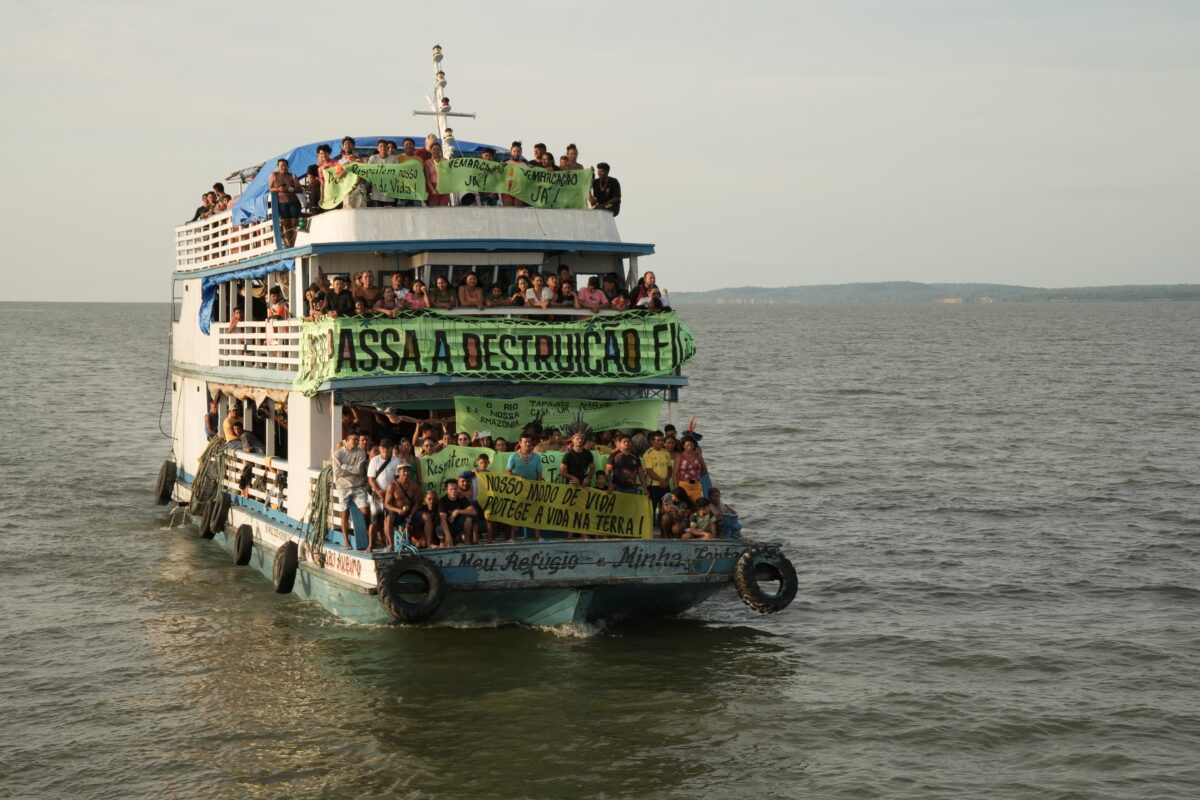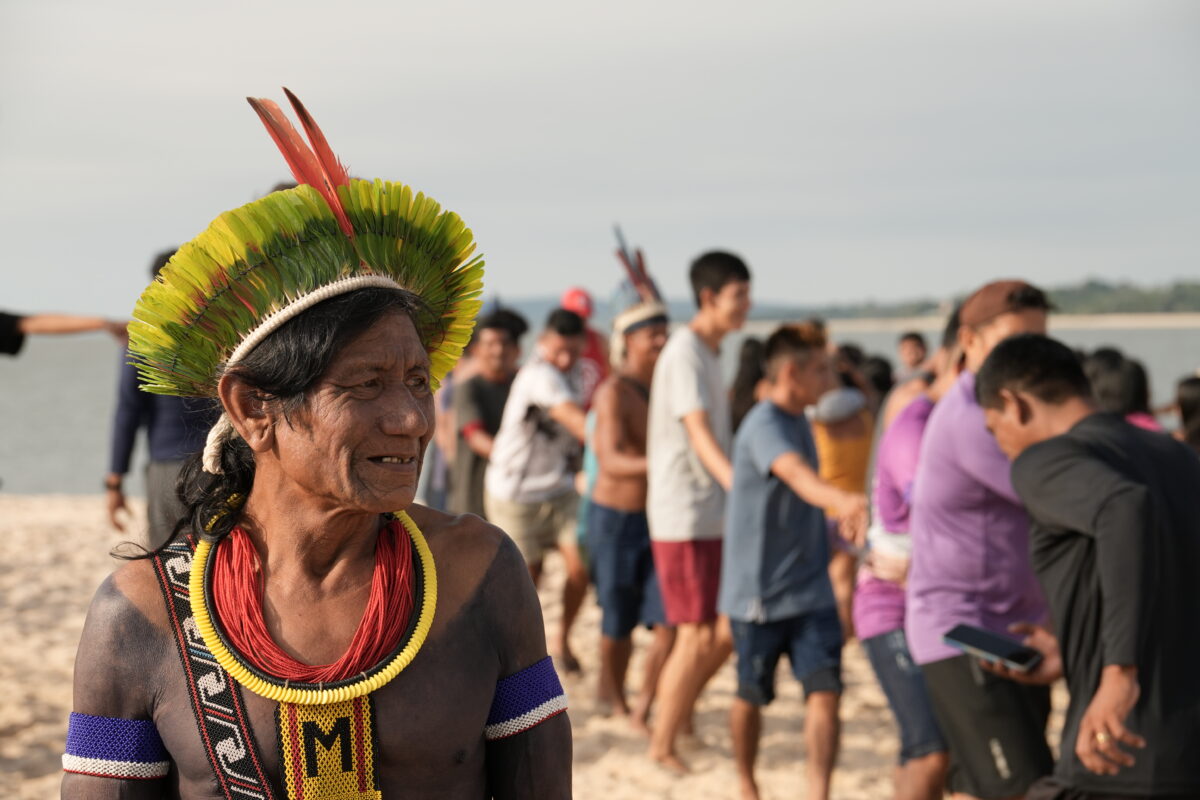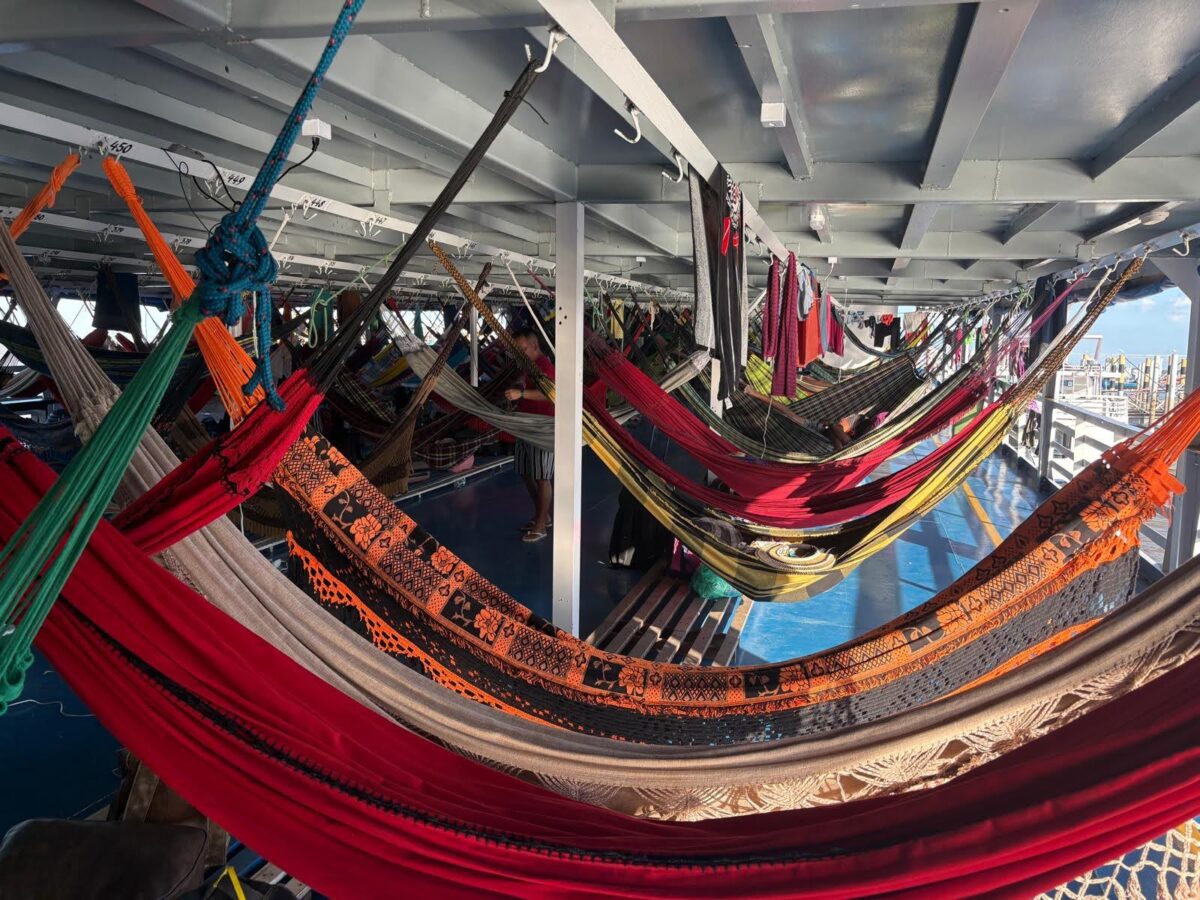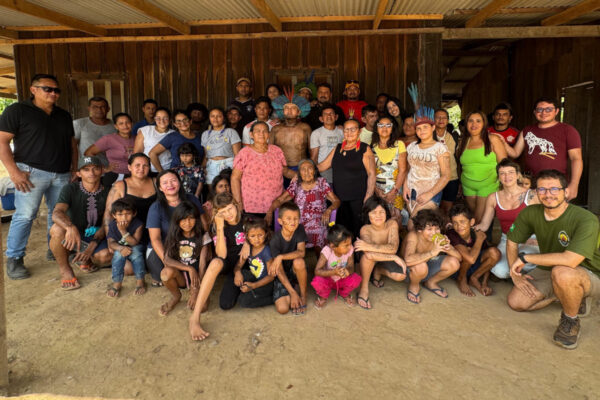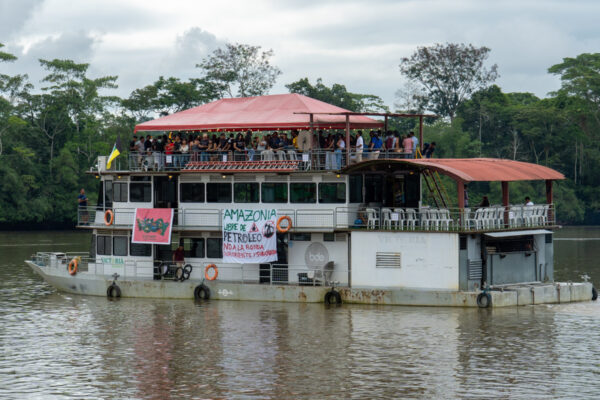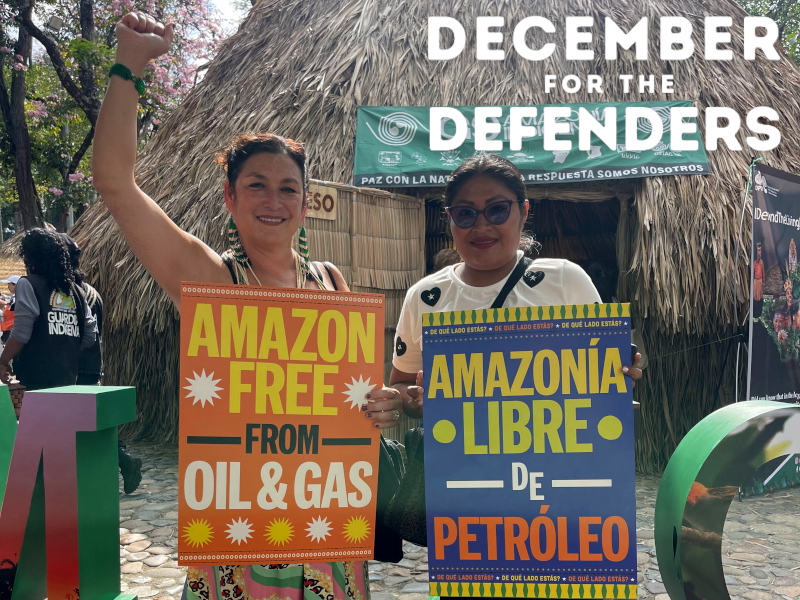After traveling more than 3,000 kilometers from Brazil’s soy frontier to the banks of the Guajará Bay, The Answer Caravan arrived in Belém yesterday, opening the People’s Summit at COP30 with a powerful message of resistance and hope. More than 200 boats carrying over 5,000 Indigenous, riverine, quilombola, and social movement leaders filled the bay in a historic call for climate and territorial justice.
From the soy route to the rivers of resistance
The caravan began its journey on November 4 in Sinop, Mato Grosso, retracing Brazil’s “soy route,” but this time in protest. Organized by the Aliança Chega de Soja (“Enough Soy Alliance”) with support from Amazon Watch, the caravan united over 40 organizations and communities from the Amazon and Cerrado to denounce the destructive model of agribusiness, the Ferrogrão railway, and industrial waterways that threaten their territories.
“The COP wasn’t made for us, but we are going to the COP,” said Gilson Tupinambá of the Tupinambá Indigenous Council. “We’re surrounded by loggers, miners, and soy, but our answer is unity: Indigenous peoples, riverine families, and quilombolas together for life.”
The river journey to Belém
On November 8, the caravan set sail from Santarém, beginning a 1,600-kilometer river voyage to COP30’s host city. Along the way, communities gathered for assemblies and cultural exchanges, carrying not only their demands but also agroecological food to supply the Solidarity Kitchen at the People’s Summit, a living example of people-powered climate solutions.
“Our struggle is against corporate ports, waterways, and Ferrogrão, but we also bring the answer,” said Amazon Watch Brazil Campaigner Pedro Charbel of the Enough Soy Alliance. “The answer is agroecology, solidarity, and living territories with standing forests and clean rivers.”
Arrival at COP30: “Without people, there is no climate solution”
As the flotilla entered Guajará Bay, Chief Raoni Metuktire addressed the crowd: “The forest lives because we are here. If they remove the people, the forest will die with them. We don’t want oil drilling or the Ferrogrão. The government must show respect.”
He was joined by Alessandra Korap Munduruku, who reminded the world: “The rivers are our roads and our home. The future of the Amazon is in the hands of the people who care for it. Without living forest and living peoples, there is no solution to the climate crisis.”
Women leaders like Kokonã Metuktire and Vivi Borari reinforced this message: “Soy contaminates the soil, the water, and the future. Carry our message to the world: stop threatening the future of our children.”
A message to the world
For Amazon Watch, supporting this historic journey was part of its long-standing commitment to defend the Amazon and Indigenous rights. Negotiators inside the Blue Zone must listen to these legitimate calls for climate and territorial justice.
“The people are speaking out: the forest and the planet cannot wait any longer. No to Ferrogrão. Climate justice now!”As the sun set over Belém, the boats remained on the water, their banners proclaiming a simple truth carried through every stage of the journey: The people are the answer. The forest lives because they do.
